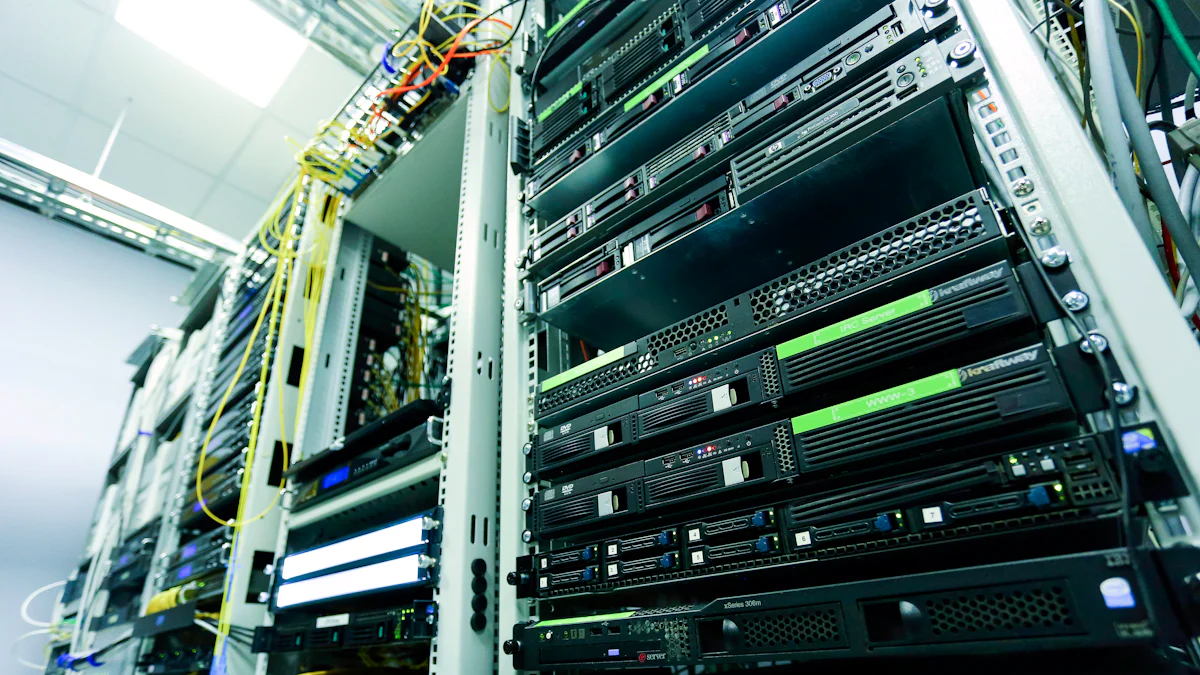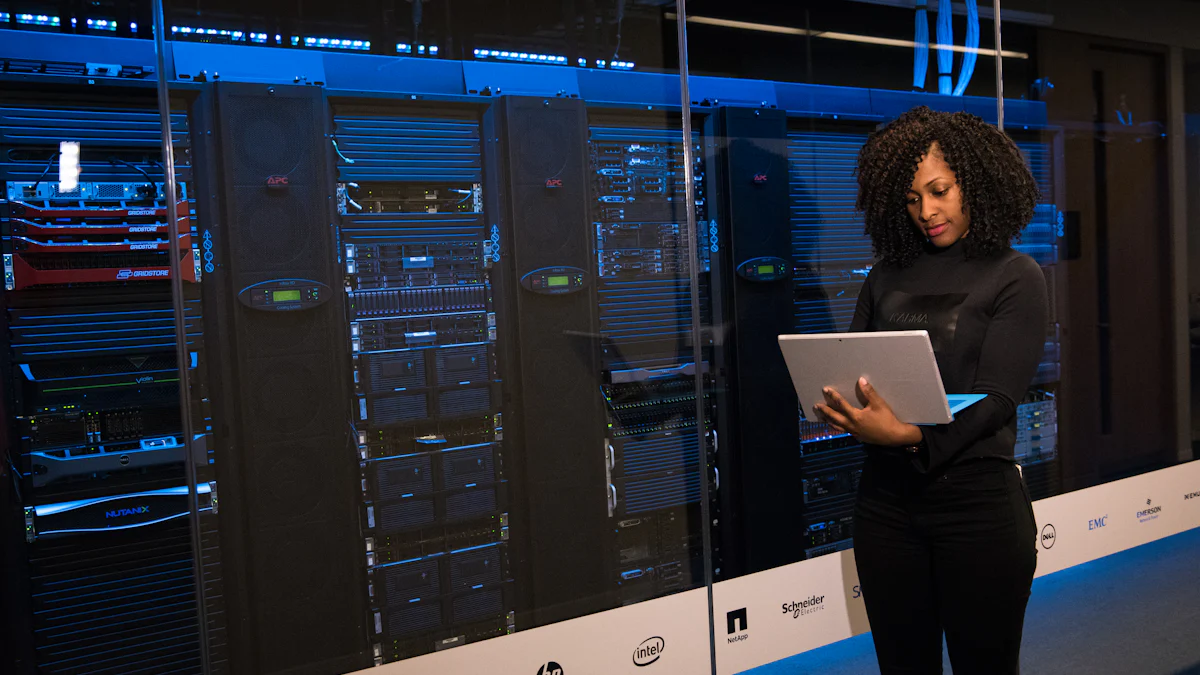Comparing the Best Database Management Systems for 2025

Selecting the right database management system has become a critical decision for businesses in 2025. With the DBMS market projected to grow from USD 6.75 billion in 2023 to USD 60.70 billion by 2025, the demand for efficient database solutions continues to rise. As organizations manage 14 exabytes of data through cloud databases, choosing a system that aligns with your goals ensures smooth operations and scalability.
However, challenges like slow database performance, data loss, and scaling issues can hinder progress. Tools like Chat2DB simplify database management by offering AI-driven solutions that streamline workflows and enhance productivity. By making informed choices, you can overcome these obstacles and unlock the full potential of your data.
Key Takeaways
Picking the right database system is key for success in 2025. It affects how data is managed and how well work gets done.
Relational databases work well for organized data and tricky questions. Non-relational databases are better for messy or flexible data.
Think about how much growth you need. Relational databases grow upward, while non-relational ones grow outward.
Look at the total cost, including starting and ongoing fees. Compare free open-source options with paid commercial ones.
Tools like Chat2DB make managing databases simple. They turn plain language into queries, helping all users easily.
Understanding Database Types
Choosing the right database type is essential for managing your data effectively. Each type offers unique features and benefits, making it suitable for specific use cases. Let’s explore the two primary types: relational and non-relational databases.
Relational Databases (SQL)
Key Features of Relational Databases
Relational databases organize data into tables with rows and columns, ensuring a structured format. They rely on a predefined schema, which enforces consistency and integrity. These databases adhere to ACID properties (Atomicity, Consistency, Isolation, Durability), making them reliable for transactional operations. Relationships between data are defined using multiple tables, which ensures data normalization and reduces redundancy.
Common Use Cases for Relational Databases
Relational database management systems are ideal for applications requiring structured data and complex queries. They excel in scenarios like financial transactions, inventory management, and customer relationship management (CRM). For example, businesses use relational databases to track sales, manage employee records, or store customer information. Tools like Chat2DB enhance the usability of relational databases by simplifying SQL query generation, even for non-technical users.
Non-Relational Databases (NoSQL)
Key Features of Non-Relational Databases
Non-relational databases offer flexibility by allowing unstructured or semi-structured data storage. They do not require a predefined schema, making them adaptable to changing data needs. Many NoSQL databases prioritize performance and scalability, often following the BASE model (Basically Available, Soft state, Eventual consistency). This approach ensures high availability and faster read/write operations.
Common Use Cases for Non-Relational Databases
Non-relational databases are perfect for handling large volumes of diverse data. They are widely used in big data analytics, content management systems, and IoT applications. For instance, e-commerce platforms use NoSQL databases to store product catalogs and user activity logs. Their ability to scale horizontally makes them a popular choice for applications with high traffic or rapidly growing data.
When to Choose Relational vs Non-Relational
Factors to Consider
When deciding between relational and non-relational databases, consider your data structure, scalability needs, and performance requirements. Relational databases work best for structured data with complex relationships. They ensure data consistency and are optimized for intricate queries. On the other hand, non-relational databases handle unstructured data efficiently and scale horizontally, making them cost-effective for large datasets. If your application demands flexibility and rapid development, NoSQL databases are a better fit.
Relational Databases | Non-Relational Databases | |
|---|---|---|
Data Structure | Tabular format (rows and columns) | Flexible structure, can store various types of data |
Relationships | Defined using multiple tables | No rigid relationships, data can be stored in a single view |
Schema | Requires predefined schema | Schema-less or flexible schema |
By understanding these differences, you can select the database management system that aligns with your goals. Chat2DB supports both relational and non-relational databases, offering a versatile solution for your data management needs.
Comparison Matrix of Popular DBMS

Key Metrics for Comparison
Scalability
Scalability determines how well a database can handle increased workloads. Relational databases like MySQL and PostgreSQL scale vertically by upgrading hardware, which works well for moderate growth. Non-relational databases, such as MongoDB and Cassandra, excel in horizontal scaling. They distribute data across multiple servers, making them ideal for applications with high traffic or rapidly growing datasets. You should evaluate your growth projections to choose a DBMS that aligns with your scalability needs.
Performance
Performance varies based on the type of database and its use cases. MySQL delivers high read performance, making it suitable for web applications. PostgreSQL handles complex queries and large datasets efficiently, while MongoDB excels in managing unstructured data. For example, if you need fast query execution for structured data, MySQL is a strong choice. However, for big data analytics, MongoDB offers better performance.
Ease of Use
Ease of use depends on the interface and tools available. Open-source databases like MySQL and PostgreSQL have extensive documentation and active communities, which simplify learning and troubleshooting. Tools like Chat2DB enhance usability by generating SQL queries through natural language, making database management accessible even for beginners.
Cost
Open-source database management systems often have minimal upfront costs, making them budget-friendly. MySQL, PostgreSQL, and SQLite are examples of cost-effective options. Commercial databases like Oracle Database and Microsoft SQL Server require licensing fees and ongoing maintenance, which can increase costs over time. If you prioritize affordability, open-source solutions are a practical choice.
Summary Table of Top DBMS
Database | Strengths | Weaknesses |
|---|---|---|
MySQL | Less effective for unstructured data | |
PostgreSQL | Handles complex queries, supports large datasets | Requires more configuration for scalability |
MongoDB | Excels in unstructured data and big data apps | Limited ACID compliance across multiple docs |
Microsoft SQL Server | Enterprise-grade features, strong security | High licensing costs |
Oracle Database | Robust for enterprise use cases | Expensive and resource-intensive |
SQLite | Lightweight, great for mobile apps | Not suitable for large-scale applications |
Redis | Ultra-fast in-memory database | Limited to specific use cases |
Cassandra | Highly scalable for distributed systems | Complex setup and maintenance |
Elasticsearch | Excellent for search and analytics | Resource-heavy for small-scale deployments |
This database comparison highlights the strengths and weaknesses of popular DBMS options. By understanding these differences, you can select the right database for your specific needs. Tools like Chat2DB further simplify database management by supporting multiple databases and streamlining query generation.
Detailed Analysis of Top Database Management Systems

MySQL
Pros
MySQL offers several advantages that make it a preferred choice for many applications:
It works seamlessly with content management systems like WordPress and Joomla.
It supports e-commerce platforms by managing product and customer data efficiently.
It ensures scalability and security, making it suitable for financial services.
MySQL is easy to install and use, even for beginners.
Its ACID compliance guarantees data integrity during transactions.
Full-text search enhances its ability to handle textual data.
As an open-source solution, it eliminates licensing costs.
Cross-platform compatibility allows flexible deployment.
Cons
While MySQL is powerful, it has limitations. It struggles with unstructured data and lacks advanced features for handling complex queries. Horizontal scalability is also limited compared to some non-relational database options.
Ideal Use Cases
MySQL is ideal for structured data applications. It excels in managing relational databases for websites, e-commerce platforms, and financial systems. Its simplicity and cost-effectiveness make it a popular DBMS for small to medium-sized businesses.
PostgreSQL
Pros
PostgreSQL stands out for its advanced features and flexibility. It handles complex queries and large datasets effectively. Its support for JSON and XML makes it versatile for modern applications. PostgreSQL also ensures data integrity with ACID compliance and offers robust security features.
Cons
PostgreSQL’s memory usage can become high because it creates a new process for each client connection. This makes it less efficient than MySQL for read-heavy operations. Additionally, it has historically been less popular, leading to fewer third-party tools and experienced administrators.
Ideal Use Cases
PostgreSQL is perfect for applications requiring complex queries and large-scale data analysis. It is widely used in industries like finance, research, and analytics. Its ability to handle diverse data types makes it suitable for hybrid applications.
MongoDB
Pros
MongoDB provides unmatched flexibility for handling unstructured data. It supports evolving data structures and integrates seamlessly with hybrid and multi-cloud environments. MongoDB delivers high performance for applications requiring rapid data access. Its schema-less design supports agile development and collaboration.
Cons
MongoDB lacks full ACID compliance across multiple documents, which can limit its reliability for transactional operations. It also requires careful indexing to maintain performance as data grows.
Ideal Use Cases
MongoDB is ideal for non-relational database applications. It excels in big data analytics, IoT, and content management systems. Industries that need to integrate large amounts of diverse data or support agile development benefit the most from MongoDB.
Microsoft SQL Server
Pros
Microsoft SQL Server offers enterprise-grade features that cater to businesses of all sizes. It provides robust security measures, including encryption and role-based access control, ensuring your data remains protected. Its integration with other Microsoft tools, such as Power BI and Azure, enhances productivity and streamlines workflows. SQL Server supports both vertical and horizontal scalability, allowing you to handle growing workloads effectively. You can also utilize MPP databases for parallel processing or implement database sharding to improve performance. Additionally, its user-friendly interface and extensive documentation make it accessible for users with varying skill levels.
Cons
Despite its strengths, Microsoft SQL Server has some drawbacks. Licensing costs can be high, especially for small businesses or startups. It also requires significant hardware resources, which may increase operational expenses. While it excels in structured data management, it may not be the best choice for non-relational database applications.
Ideal Use Cases
Microsoft SQL Server is ideal for enterprise applications requiring high security and reliability. It works well for managing financial data, healthcare records, and large-scale e-commerce platforms. Its scalability options make it suitable for businesses expecting rapid growth or handling complex queries.
Oracle Database
Pros
Oracle Database is a powerful database management system known for its reliability and advanced features. It supports both relational and non-relational database models, making it versatile for diverse applications. Its robust performance ensures efficient handling of large datasets and complex queries. Oracle’s built-in machine learning capabilities allow you to gain insights from your data without external tools. It also offers excellent scalability, supporting vertical scaling and distributed systems for high availability.
Cons
Oracle Database’s primary drawback is its cost. Licensing fees and maintenance expenses can be prohibitive for smaller organizations. It also has a steep learning curve, requiring skilled administrators for effective management. Resource-intensive operations may lead to higher infrastructure costs.
Ideal Use Cases
Oracle Database is best suited for large enterprises with critical data management needs. It excels in industries like banking, telecommunications, and retail, where reliability and performance are paramount. Its ability to handle hybrid workloads makes it a popular DBMS for businesses with diverse data requirements.
SQLite
Pros
SQLite is a lightweight database solution designed for simplicity and portability. It requires no server setup, making it easy to deploy in embedded systems and mobile applications. Its in-memory mode allows quick testing and development without the overhead of a full database management system. SQLite’s small footprint and minimal resource requirements make it cost-effective for applications with limited storage or processing power.
Cons
SQLite is not suitable for large-scale applications or scenarios requiring high concurrency. It lacks advanced features like user management and robust security measures. Its performance may degrade when handling extensive datasets or complex queries.
Ideal Use Cases
SQLite is perfect for embedded applications, mobile apps, and games where portability is essential. It also works well as a replacement for disk access in applications that read and write files directly. Developers often use SQLite for testing purposes due to its simplicity and speed.
Use Case | Description |
|---|---|
Embedded applications | Ideal for applications needing portability without future expansion, such as mobile apps or games. |
Disk access replacement | Provides additional functionality and simplicity for applications that read/write files directly. |
Testing | Offers an in-memory mode for quick testing without the overhead of a full DBMS. |
Redis
Pros
Redis is a high-performance, in-memory database that excels in real-time applications. Its advantages include:
Best-in-class performance at scale, delivering sub-millisecond response times across all data types.
High availability with 99.999% uptime, ensuring uninterrupted operations even during cluster changes.
Active-active geo-distribution, enabling simultaneous read and write operations across multiple locations. This feature reduces latency and ensures disaster recovery.
Built-in durability with multiple persistence options, making it ideal for cloud-native architectures.
Multi-layer security and compliance, safeguarding sensitive production data.
These features make Redis a reliable choice for applications requiring speed, availability, and scalability.
Cons
Redis has limitations that you should consider. It stores data in memory, which can lead to higher costs for large datasets. While it supports persistence, it is not as robust as traditional relational databases. Redis also requires expertise to configure and optimize for specific use cases.
Ideal Use Cases
Redis is perfect for real-time applications where speed is critical. Examples include caching, session management, and leaderboards in gaming. It also works well for chat applications, real-time analytics, and streaming data pipelines. Its ability to handle high-throughput workloads makes it a popular choice for modern web and mobile applications.
Cassandra
Pros
Cassandra is a distributed NoSQL database designed for handling massive amounts of data across multiple servers. Its strengths include:
High scalability, allowing horizontal scaling by adding more nodes to the cluster.
Fault tolerance, ensuring no single point of failure. Data replication across nodes guarantees availability even during hardware failures.
High write performance, making it suitable for applications with heavy write operations.
Support for flexible schemas, enabling you to adapt to changing data requirements.
Cassandra’s architecture makes it ideal for managing large-scale, distributed datasets.
Cons
Cassandra’s complexity can be a challenge. Setting up and maintaining a cluster requires significant expertise. Querying data can also be less intuitive compared to SQL-based systems. Additionally, its eventual consistency model may not suit applications requiring immediate data accuracy.
Ideal Use Cases
Cassandra is best suited for applications requiring high scalability and availability. Examples include IoT platforms, time-series data storage, and large-scale e-commerce systems. It is also widely used in industries like telecommunications and finance, where distributed data management is essential.
Elasticsearch
Pros
Elasticsearch is a powerful search and analytics engine. Its advantages include:
Real-time observability, allowing you to monitor and analyze complex systems.
Full-text search capabilities, supporting diverse queries for applications like e-commerce and document management.
Real-time log analytics, enabling error detection and performance monitoring.
Security analytics, helping you identify and investigate threats in real time.
Elasticsearch’s ability to process and analyze large volumes of data quickly makes it a valuable tool for modern businesses.
Cons
Elasticsearch can be resource-intensive, requiring significant memory and CPU for optimal performance. Its setup and maintenance can also be complex, especially for small-scale deployments. Additionally, it is not a traditional database, so it may not suit applications requiring transactional consistency.
Ideal Use Cases
Elasticsearch is ideal for data analytics and search-heavy applications. Common use cases include monitoring system logs, powering search engines, and analyzing security data. It is also widely used in e-commerce for product searches and recommendations.
Key Considerations for Selecting a DBMS
Scalability
Vertical vs Horizontal Scaling
Scalability is a critical factor when selecting a database management system. You need to decide between vertical and horizontal scaling based on your growth needs. Vertical scaling involves upgrading the power of a single machine by adding more CPU or RAM. This approach works well for relational databases like MySQL on Amazon RDS. However, it has limitations due to the capacity of a single machine.
Horizontal scaling, on the other hand, adds more machines to the resource pool. This method partitions data across multiple nodes, making it ideal for non-relational databases like Cassandra and MongoDB. Horizontal scaling offers better resilience since it avoids a single point of failure. It also supports dynamic scaling, which is essential for applications with unpredictable traffic.
Vertical Scaling | Horizontal Scaling |
|---|---|
Adds more power to an existing machine | Adds more machines to the resource pool |
Data resides on a single node | Data is partitioned across multiple nodes |
Limited by machine capacity | Scales dynamically with additional machines |
Examples of Scalable DBMS
Some DBMS options excel in horizontal scaling. These include Cassandra, MongoDB, and Google Cloud Spanner. If your application requires handling large datasets or high traffic, these systems provide the scalability you need.
Performance
Query Speed and Optimization
Optimizing query performance ensures your database operates efficiently. You can improve query speed by avoiding SELECT * and using specific column names. Choosing the correct JOIN operation, such as inner or left join, also enhances performance. Additionally, clustered indexes organize data rows on disk, making retrieval faster for frequently accessed columns. Non-clustered indexes act as directories, providing multiple reference points for optimized queries.
Handling Large Data Volumes
Managing large data volumes presents challenges like storage, processing, and cost. Distributed computing systems help process data efficiently, while validation processes ensure data quality. For example, non-relational databases like MongoDB handle unstructured data effectively, making them suitable for big data use cases. However, you must also address governance issues, including privacy and compliance, to maintain data integrity.
Budget
Open-Source vs Commercial Options
Your budget plays a significant role in choosing a DBMS. Open-source options like MySQL and PostgreSQL offer cost-effective solutions with minimal upfront costs. These systems are ideal for startups or small businesses. Commercial databases like Oracle Database and Microsoft SQL Server provide advanced features but require licensing fees, which can increase expenses.
Total Cost of Ownership
The total cost of ownership includes both capital expenses (CAPEX) and operational expenses (OPEX). CAPEX covers one-time costs like hardware and licensing, while OPEX includes recurring expenses such as datacenter rental and personnel. You should also consider factors like disaster recovery and change management processes when evaluating the long-term costs of a DBMS.
Integration and Ecosystem
Compatibility with Existing Tools
When selecting a database management system, you should evaluate how well it integrates with your existing tools and workflows. A DBMS that supports seamless integration can save time and reduce operational complexity. For example, many relational databases like MySQL and PostgreSQL work effortlessly with popular analytics platforms, reporting tools, and programming languages. This compatibility ensures that you can extract insights from your data without additional effort.
Non-relational database systems, such as MongoDB, often provide APIs and connectors for integration with modern applications. These features make them suitable for use cases like big data analytics and IoT. Tools like Chat2DB enhance integration by supporting multiple database types, including SQL and NoSQL. With Chat2DB, you can connect to various data sources and generate optimized queries in seconds. This capability simplifies workflows and improves performance across your ecosystem.
Community Support and Documentation
A strong community and comprehensive documentation are essential for any DBMS. Open-source databases like MySQL and PostgreSQL benefit from active user communities. These communities provide forums, tutorials, and troubleshooting guides, making it easier for you to resolve issues. MongoDB and other non-relational database systems also offer extensive resources, ensuring you can find solutions quickly.
Chat2DB, as an AI-powered database tool, complements these resources by simplifying query generation and database management. Its open-source nature has fostered a vibrant community on platforms like GitHub. This community shares tips, plugins, and best practices, helping you maximize the tool's potential. Whether you're a beginner or an experienced user, access to robust documentation and community support ensures you can manage your data effectively.
Tip: Always choose a DBMS with strong community backing and detailed documentation. These resources can save you time and effort when troubleshooting or learning new features.
This blog has explored the strengths and weaknesses of various database management systems, categorizing them into relational and non-relational types. You’ve learned how systems like MySQL, PostgreSQL, and MongoDB excel in different scenarios. For startups, open-source options like SQLite or MySQL offer cost-effective solutions. Enterprises benefit from robust systems like Oracle Database or Microsoft SQL Server, while developers may prefer flexible tools like MongoDB for agile projects. Selecting the right database ensures your data aligns with your goals and supports future growth. Tools like Chat2DB simplify this process, making database management accessible and efficient.
FAQ
What is the difference between SQL and NoSQL databases?
SQL databases use structured tables with predefined schemas, while NoSQL databases store unstructured or semi-structured data without fixed schemas. SQL databases are ideal for complex queries and relationships. NoSQL databases excel in scalability and flexibility, making them suitable for big data and real-time applications.
How does Chat2DB simplify database management?
Chat2DB uses AI to generate SQL queries from natural language inputs. You can ask questions in plain English, and the tool creates optimized queries instantly. It supports multiple databases, including MySQL and MongoDB, making it versatile for both relational and non-relational database management.
Which database is best for startups?
Startups often benefit from open-source databases like MySQL or PostgreSQL due to their cost-effectiveness and community support. Tools like Chat2DB enhance usability by simplifying query generation, allowing you to focus on growth without needing advanced database expertise.
Can I use Chat2DB with non-relational databases?
Yes, Chat2DB supports non-relational databases like MongoDB. Its AI-driven interface allows you to manage unstructured data efficiently. You can generate queries, analyze data, and streamline workflows without needing to write complex code.
What factors should I consider when choosing a DBMS?
You should evaluate scalability, performance, cost, and integration with existing tools. Consider your data structure and future growth needs. Tools like Chat2DB can help by supporting multiple databases and simplifying query management, ensuring your choice aligns with your goals.
See Also
Essential Database Tools to Explore in 2024
Best SQL Clients Available for Windows This Year
Outstanding Open Source Alternatives to DBeaver in 2024

